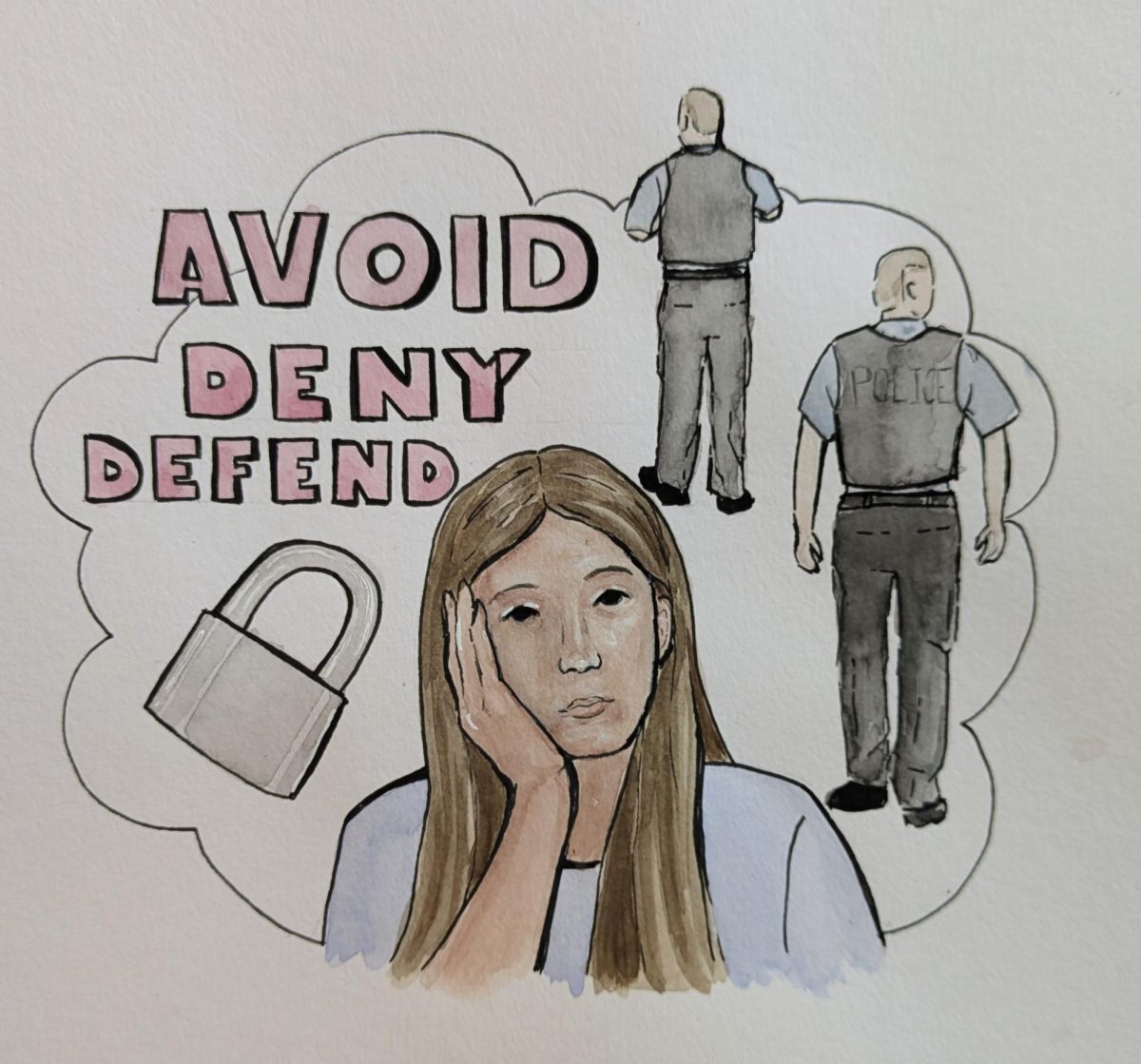Why do trans athletes face inequality?
May 13, 2022
This previously ran in our April 2022 print issue.
Recently, University of Pennsylvania swimmer Lia Thomas won a race.
We’ll write that again for emphasis. One race — and the world had a fit.
Podcaster Joe Rogan called her an “assault on women’s sports.” Former Olympian and reality show star Caitlyn Jenner said that Thomas was not the “rightful winner” of the race. Some people claimed Thomas shouldn’t be allowed to compete at all. Others claimed she had an unfair advantage, and that people like her were ruining women’s sports.
Thomas’s transgression: she’s transgender.
During the 500-meter race, Thomas struggled as other swimmers traded for the lead. Rather than dominating it, as people have claimed, she trailed for most of the first half. All the while, about 20 protesters chanted just outside the venue, claiming that the future of women’s sports was at risk. During the second half of the race, Thomas and another swimmer, Emma Weyant, were neck and neck before Thomas finally pulled ahead to become the first trans woman to win a Division I national championship.
This should be cause for celebration, but instead the win created a firestorm, with politicians in Harrisburg and across the country pushing legislation to ban trans women from sports. These bills could not be more misguided.
The NCAA and the International Olympic Commit- tee (IOC) did extensive research when they created guidelines for trans inclusion in sports. According to the NCAA, “A trans female treated with testosterone suppression medication may continue to compete on a men’s team but may not compete on a women’s team without changing it to a mixed team status until completing one year of testosterone suppression treatment.”
According to the IOC, “no athlete should be precluded from competing or excluded from competition on the exclusive ground on an unverified, alleged or perceived unfair competitive advantage due to their sex variations, physical appearance and/or transgender status.”
Despite the widespread fear of transgender people dominating women’s sports, the evidence just isn’t there. The NCAA has been allowing trans women to compete for over 10 years. Yet, Thomas is the first trans woman to win a NCAA swimming title. That’s probably because there aren’t many transgender people to begin with, and even fewer trans athletes.
According to a study published by the CDC, only 1.8% of high school students are transgender. Of that 1.8%, only 12% of transgender girls and 14% of transgender boys play sports in high school, according to the Human Rights Campaign. In other words, it’s a fraction of a percentage. In Utah, when the governor vetoed an anti-trans sports bill, it was determined that just four transgender individuals had gone through the Utah State High School Athletics Association (USHAA) paperwork to participate in sports that year.
Even if Thomas and other trans female swimmers had an advantage, it wouldn’t be any different than other advantages commonly accepted as the norm in sporting events. Natural advantages exist across all sports and players. In basketball, players who are taller have an ad- vantage, and that comes with any gender. NBA statistics show that the top five players with the highest points per game average for the season so far are all above six and a half feet tall.
Being taller gives the advantage of being closer to the rim, making rebounds easier and helping with the extension of the arm while shooting. The correlation between natural height has nothing to do with gender and more of genetics. According to an article written by Tufts University researcher Chao-Qiang Lai, “60 to 80 percent of the difference in height between individuals is determined by genetic factors.”
Even if trans athletes had an advantage that went far beyond what was already commonly accepted, these bans do more harm than good. A study published in the Journal for Interpersonal Violence found that 56% of transgender youth have attempted suicide, and 86% have seriously considered it. The study found that a factor that most contributed to suicidal tendencies in teens was “school belonging.” A study in the Journal of Adolescent Health shows that students who participated in sports during adolescence generally have lower symptoms of depression, anxiety, and overall better levels of mental health in adulthood. If we disallow transgender students from participating in sports, that alienates them from the rest of the school population, and prevents them from enjoying an activity that can greatly improve their mental health into adulthood.
More important: Student sports are about more than just winning and losing. Team sports teach valuable life lessons and skills like teamwork, humility, and sportsmanship.
By banning trans athletes, these organizations are essentially sticking up for all of the sore losers who’ve ever yelled at a referee over a call, punched another player, or stormed off the field in a rage.
If we ban trans people from sports, we all become losers. When we include them, we all win.











